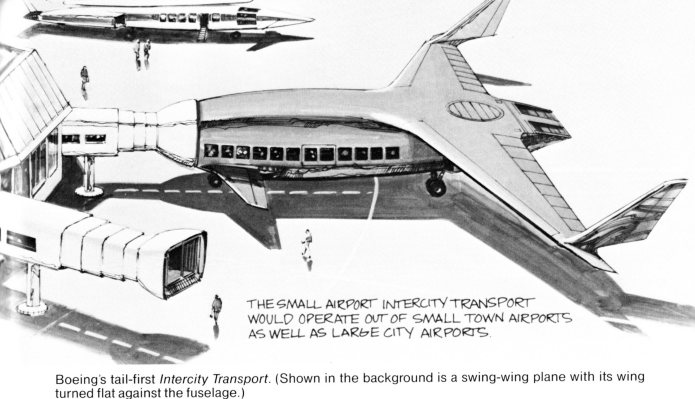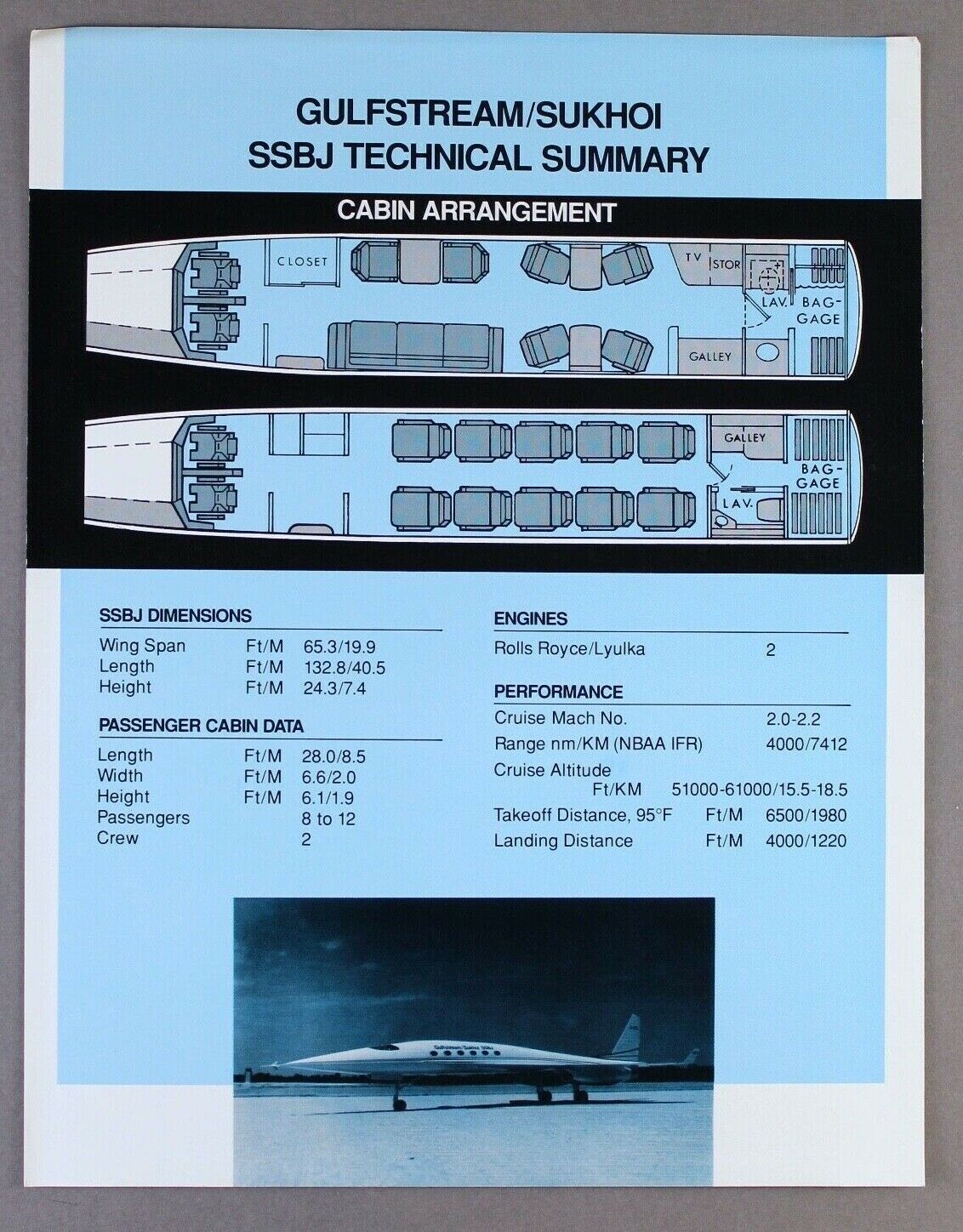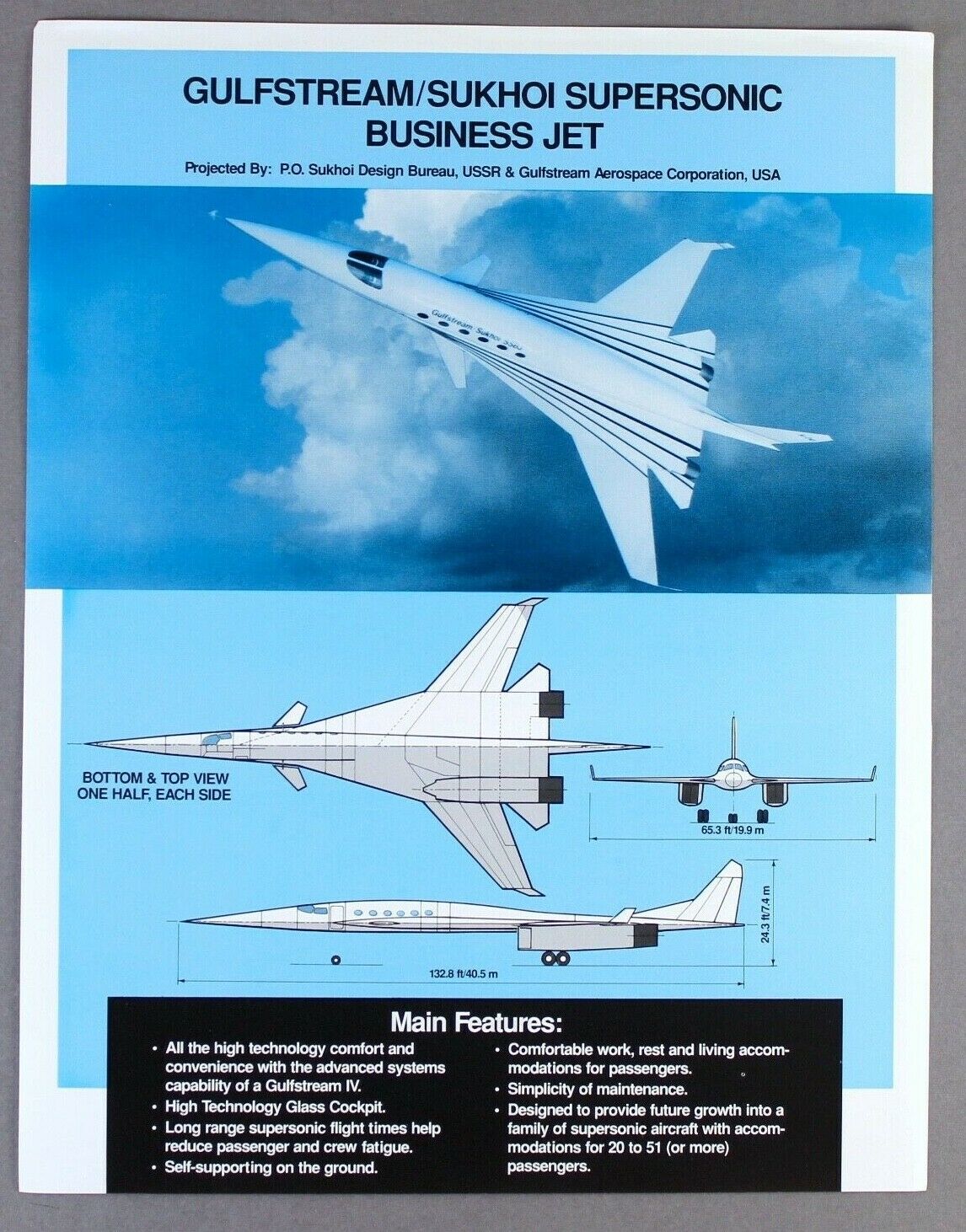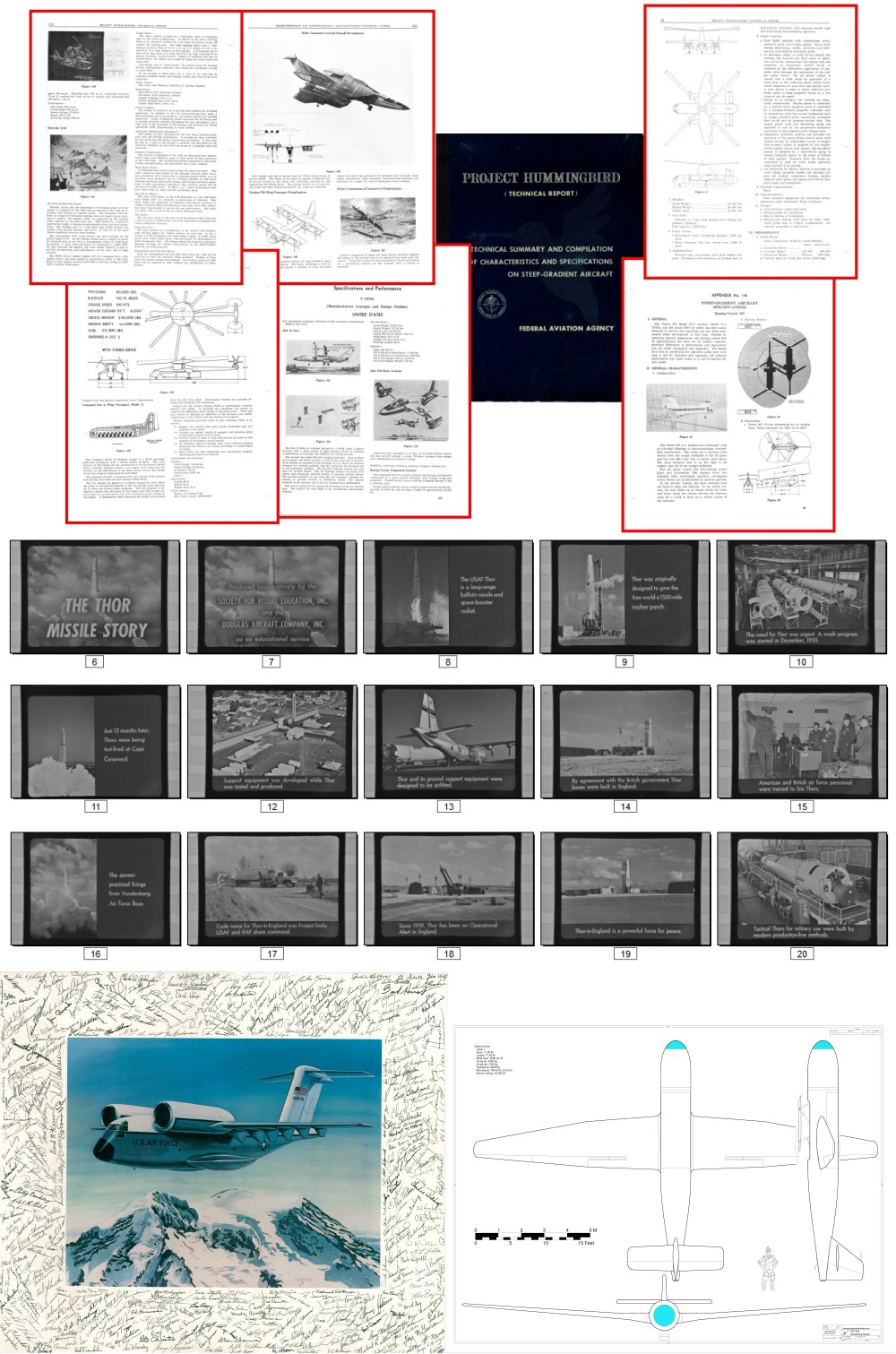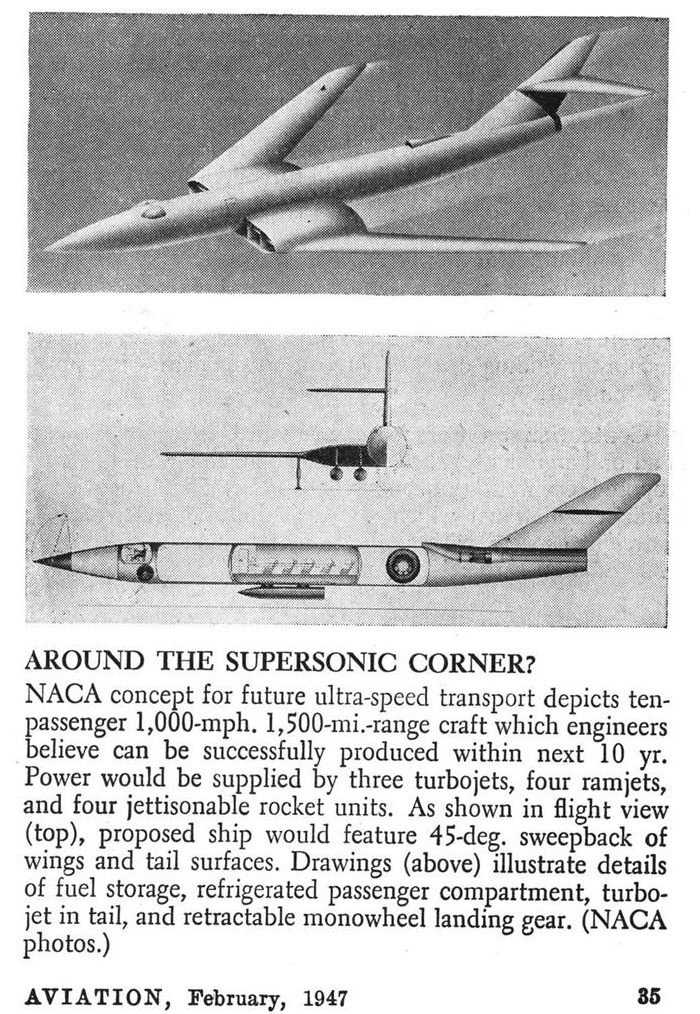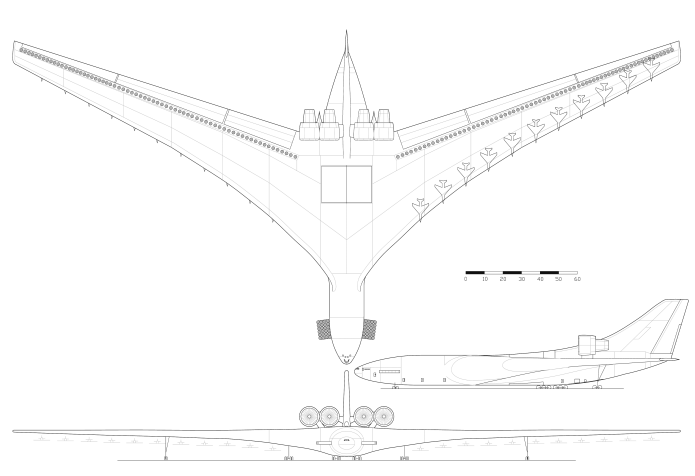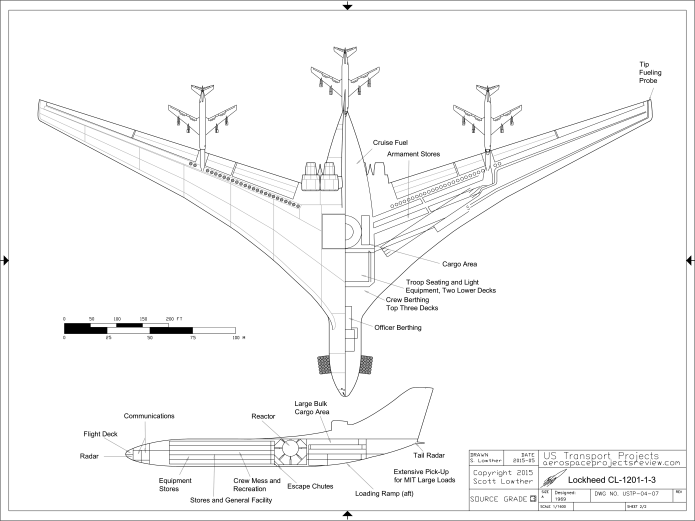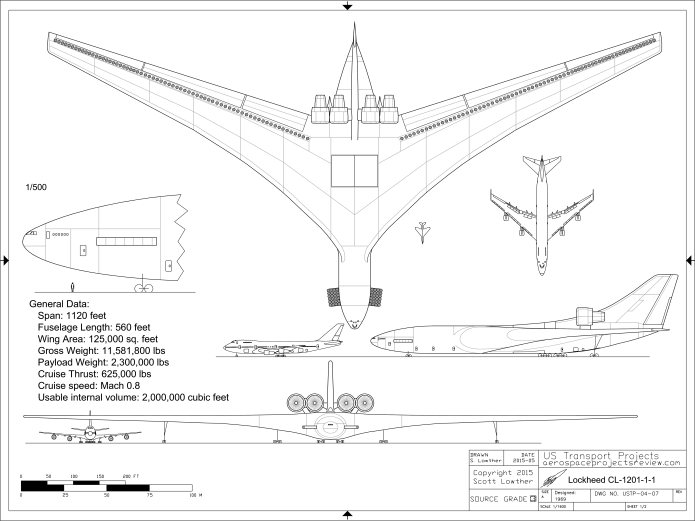Another strange piece of 1970’s/early 1980’s Boeing art, this time depicting an “Intercity Transport.” What’s going on with that circular “inlet” on the rear upper fuselage? Damnfino. Just visible under the wing root is a low-set inlet, so that would seem to provide what’s needed for the propulsion system. If there was a vertical thrust system in the nose, and good low-speed control systems on the outer wings, then that circular inlet would be fore a VTOL system. But on its own? Hmmm.
The full rez scan of the artwork has been made available at 300 DPI to all $4/month patrons/subscribers in the 2021-05 APR Extras folder at Dropbox. If you would like to help fund the acquisition and preservation of such things, along with getting high quality scans for yourself, please consider signing on either for the APR Patreon or the APR Monthly Historical Documents Program.
